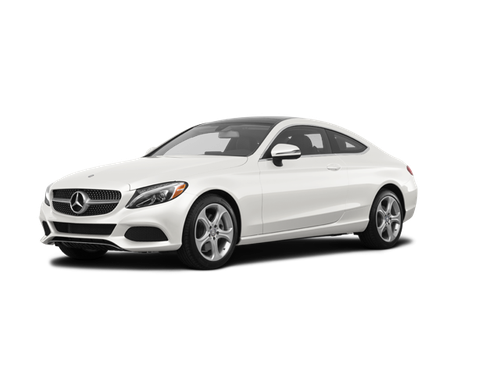What's the best car insurance for luxury vehicles?
Buying a luxury car isn’t like buying a Kia Forte. Your new ride is more than an A-to-B method of transportation: it's a finely tuned driving machine that lets you enjoy the journey. As such, it’s worth protecting to the fullest. Let’s explore the best car insurance for luxury vehicles, as well as some additional insurance options worth considering for a high-performance vehicle.
Insurance for luxury vehicles
Cheapest luxury car insurance by model and company
Luxury car insurance is often more expensive than insurance for a standard vehicle. Because car insurance is designed to protect your vehicle, the high price of a luxury car inevitably leads to higher insurance costs. For the models included in our survey, the average annual insurance premium for a luxury car was about 18% higher than the cost of insuring a moderately priced sedan. We broke down average insurance costs for popular luxury car models, generating average quotes from individual companies using a driver profile outlined here.
- Audi Q5
- BMW 3 Series
- BMW X3
- BMW X5
- Infiniti Q50
- Lexus ES
- Lexus RX
- Mercedes-Benz C-Class
- Mercedes-Benz CLS Class
Audi Q5
At a list price of $42,950, the Audi Q5 is a little more expensive than the other vehicles we surveyed and its average insurance costs reflect that, at an average premium of around $1,749. If you're considering this vehicle, your cheapest insurance option is USAA, offering an annual premium of $1,335 per year. The second cheapest is Progressive if you don't qualify for USAA.
Annual Audi Q5 insurance rates
| Company | Premium |
|---|---|
| Allstate | $2,372 |
| GEICO | $1,725 |
| Farmers | $2,155 |
| Liberty Mutual | $1,876 |
| Nationwide | $1,452 |
| Progressive | $1,367 |
| State Farm | $1,712 |
| USAA | $1,335 |
BMW 3 Series
BMW is among the most established luxury vehicle brands, and the 3 Series is a classic. If you're looking to insure this vehicle, you should begin your search with USAA and Nationwide. Average insurance rates for a 3 Series are $162 per month on top of a list price of $40,750.
Annual BMW 3 Series insurance rates
| Company | Premium |
|---|---|
| Allstate | $2,571 |
| GEICO | $2,003 |
| Farmers | $2,037 |
| Liberty Mutual | $2,097 |
| Nationwide | $1,673 |
| Progressive | $1,920 |
| State Farm | $1,763 |
| USAA | $1,500 |
BMW X3
The X3 is the cheaper of the two BMW SUVs we analyzed, insurance-wise. While the X3's price is near the middle of the pack for high-end SUVs, the model carries the cheapest average insurance premium of any of the luxury vehicles surveyed. On average, expect a monthly premium of $136 with a list price of $41,000. As with other luxury vehicles, Nationwide and USAA offer the cheapest insurance rates for the BMW X3.
Average annual BMW X3 insurance costs
| Company | Premium |
|---|---|
| Allstate | $2,163 |
| GEICO | $1,551 |
| Farmers | $1,716 |
| Liberty Mutual | $1,876 |
| Nationwide | $1,433 |
| Progressive | $1,436 |
| State Farm | $1,621 |
| USAA | $1,215 |
BMW X5
The BMW X5 is pricier both to buy and to insure than its cousin, the X3. The X5 carries a relatively steep list price ($60,700), along with an average annual insurance cost of nearly $2,000. If you can't get USAA, choosing Nationwide or Progressive can help you can lower this average to $1,600-1,800 a year.
| Company | Premium |
|---|---|
| Allstate | $2,753 |
| GEICO | $2,016 |
| Farmers | $1,959 |
| Liberty Mutual | $2,021 |
| Nationwide | $1,620 |
| Progressive | $1,781 |
| State Farm | $1,902 |
| USAA | $1,484 |
Infiniti Q50
Although the Infiniti Q50 is the cheapest option we surveyed on the luxury spectrum — with a list price of $35,650 — it's slightly more expensive than average to insure. The average annual insurance cost for an Infiniti Q50 runs $1,904, or approximately $158 per month. USAA is again the cheapest option, but if you don't qualify and still want the most affordable policy, consider Nationwide or State Farm — each offers annual rates cheaper than the average.
Annual Infiniti Q50 insurance pricing
| Company | Premium |
|---|---|
| Allstate | $2,468 |
| GEICO | $2,081 |
| Farmers | $2,119 |
| Liberty Mutual | $1,943 |
| Nationwide | $1,501 |
| Progressive | $1,995 |
| State Farm | $1,759 |
| USAA | $1,366 |
Lexus ES
Although the Lexus ES sells for less than the other Lexus selected for our survey (the Lexus RX), the ES costs over a hundred dollars more per year to insure. With a listed value of $39,900 and an average annual insurance premium of $1,814, this luxury sedan costs more than $151 per month to insure. Allstate and Farmers tend to be on the higher end for our user profile, while USAA and Nationwide remain the most affordable car insurance options for the ES.
Annual Lexus ES insurance costs
| Company | Premium |
|---|---|
| Allstate | $2,369 |
| GEICO | $1,683 |
| Farmers | $2,099 |
| Liberty Mutual | $1,911 |
| Nationwide | $1,406 |
| Progressive | $2,050 |
| State Farm | $1,701 |
| USAA | $1,293 |
Lexus RX
This luxury car follows the relatively common trend of sedans being more expensive to insure than SUVs. While the Lexus RX has a moderately high list price of $44,150, its average premium is on the lower end of surveyed luxury vehicles — after the BMW X3, it's the second cheapest luxury vehicle to insure. On average, insuring a Lexus RX costs $1,689 per year or $845 for a standard six-month policy.
Annual Lexus RX insurance rates
| Company | Premium |
|---|---|
| Allstate | $2,239 |
| GEICO | $1,631 |
| Farmers | $1,952 |
| Liberty Mutual | $1,804 |
| Nationwide | $1,356 |
| Progressive | $1,617 |
| State Farm | $1,689 |
| USAA | $1,222 |
Mercedes-Benz C-Class
The second most expensive vehicle in our survey group to insure, the Mercedes-Benz C-Class will set you back $41,400 to buy. Monthly premiums for the C-Class are on the pricier side, at nearly $167 per month. USAA, Nationwide, and State Farm are good places to start when price-shopping for Mercedes-Benz C-Class insurance.
Annual Mercedes-Benz C-Class insurance premiums
| Company | Premium |
|---|---|
| Allstate | $2,671 |
| GEICO | $2,220 |
| Farmers | $2,134 |
| Liberty Mutual | $2,166 |
| Nationwide | $1,732 |
| Progressive | $1,825 |
| State Farm | $1,770 |
| USAA | $1,473 |
Mercedes-Benz CLS-Class
Last — but certainly not the most affordable — is the Mercedes-Benz CLS Class. With the highest list price of surveyed luxury cars — nearly $70,000 — this vehicle also has the group's most expensive overall premium. On average, this vehicle costs over $2,000 per year to insure, or about $168 a month. Other than USAA, Nationwide and State Farm offer the cheapest car insurance for a Mercedes-Benz CLS-Class.
Annual Mercedes-Benz CLS-Class insurance rates
| Company | Premium |
|---|---|
| Allstate | $2,982 |
| GEICO | $2,041 |
| Farmers | $2,022 |
| Liberty Mutual | $2,170 |
| Nationwide | $1,688 |
| Progressive | $1,827 |
| State Farm | $1,766 |
| USAA | $1,596 |
Compare over 100 insurance companies at once!
Additional luxury car insurance options
Because your luxury car may come with extra features, be sure to choose an insurance policy that covers your vehicle completely. Here are some common car insurance considerations specific to luxury vehicles.
Collision and comprehensive insurance
While your policy probably includes this, it's important to remember that with any vehicle worth more than $4,000, you should carry collision and comprehensive coverage at a minimum. Although not required by law, these coverages work together to provide physical protection through most covered losses.
Gap insurance
If you’re leasing or financing your vehicle, this is a solid option. Gap insurance coverage handles the difference between what you owe for the lease or loan versus what your insurance company will pay out in the event your car is totaled. Typically, your insurance policy will pay out the actual cash value of your vehicle (which deducts for depreciation), but your loan will not factor this in. This coverage negates the possibility of going underwater on a loan.
Custom parts and equipment
This coverage protects customized parts, equipment, devices, accessories, or any non-standard add-ons you might have. While a standard policy might offer basic coverage for additional features, this protection may be relatively limited. If you have custom features on your vehicle, you might want to consider this policy. While custom coverage may vary among luxury car insurance companies, typical features include:
- Stereos
- Television equipment
- Wi-Fi access
- Navigation systems
- Special carpeting or insulation
Uninsured motorist property damage
Depending on your state and policy, you might already have uninsured motorist property damage coverage. If this isn't included in your policy, you should consider adding it. This coverage provides physical protection to your vehicle if the at-fault driver does not have insurance — or does not have enough insurance — to cover the damage to your vehicle. As a luxury vehicle is worth more than a standard car, there's a chance you could exhaust the other party’s coverage before your vehicle is repaired.
How else can you save?
The price of luxury vehicles makes them expensive to buy and to insure. Let’s break down some simple and easy steps that could save you a lot of money on luxury car insurance.
Be smart with your claims
While your instinct may be to use your insurance to protect your high-end investment, consider the long-term financial consequences of filing a claim. Most car insurance companies will charge, i.e. rate, you for any at-fault accident for three years. When you’re deciding between filing a claim* or paying out-of-pocket, consider these steps.
- Get a cost estimate for the repairs at a local shop
- Use our State of Insurance analysis to see how much an at-fault accident would raise your insurance rates in your state. Because car insurance is regulated on the state level, it will be state-specific. Again, consider this value over a three-year period.
- Compare the rate increase plus your deductible to the out-of-pocket value. Choose the cheaper option.
*This primarily relates to damage you cause to your vehicle, such as collision claims. If you cause an accident and the other party does not want you to pay out-of-pocket, you’re out of options. Moreover, comprehensive or UMPD claims historically have less of a financial impact than collision claims. If your vehicle is stolen, vandalized, or hit by an uninsured driver, you shouldn’t expect as much of a financial penalty as you would with a collision claim.
While there are considerable differences from state to state regarding rate increases for at-fault claims, below is the U.S. national average. An at-fault accident will — over the three-year period — raise your rate by more than $1,700.
AVERAGE RATE INCREASE AFTER AT-FAULT CLAIM
| Increase at 6 months | Increase at 12 months | Increase at 3 Years |
|---|---|---|
| +$308.50 | +$617 | +$1,851 |
Double-check for discounts
Although car insurance discounts are typically quite small, they can add up to cut down on your insurance bill. When looking for ways to save, consider the following discounts:
- Multi-policy discount
- Good driver discount
- Good student discount
- Paperless discount
- Payment by bank account
- Paid-in-full discount (paying your premium in one payment)
- Multi-vehicle discount
- Telematics
Shop around
While it’s usually more expensive to insure a luxury vehicle than to cover a standard Honda Accord, don’t be complacent with what you pay your insurance company. Because your premium is a reflection of you and your vehicle, it’s often a good idea to shop around for new car insurance quotes every six months to see if you can find a better rate elsewhere. Compare over a hundred rates from insurance companies across the U.S. by entering your zip code below.
Compare insurance companies now!
About The Zebra
The Zebra is not an insurance company. We publish data-backed, expert-reviewed resources to help consumers make more informed insurance decisions.
- The Zebra’s insurance content is written and reviewed for accuracy by licensed insurance agents.
- The Zebra’s insurance editorial content is not subject to review or alteration by insurance companies or partners.
- The Zebra’s editorial team operates independently of the company’s partnerships and commercialization interests, publishing unbiased information for consumer benefit.
- The auto insurance rates published on The Zebra’s pages are based on a comprehensive analysis of car insurance pricing data, evaluating more than 83 million insurance rates from across the United States.









